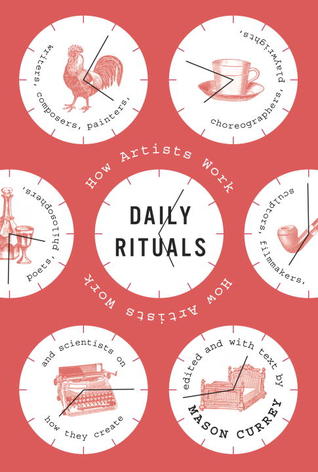I don’t know about you, but I can’t function without my routines. Or, I should say: I can function, but life is messy. I get frazzled. I get anxious. I make mistakes. And I have to devote way more time than I’d like to coping with extra complications brought on by having less structure in my day-to-day.
Not everyone feels this way, of course. But recently I’ve been doing some reading and research on the topic, and I’ve discovered that routines & habits are optimized by some of the world’s most successful creatives and businesspeople. Maybe it’s going too far to say that their routines are a significant reason for their success, but I think it’s worth considering. A well-organized life and mind leave more room for creative thought, play, and fresh ideas.
Here’s what I’ve been reading on the subject.

Atomic Habits by James Clear
You might have seen this one floating around for the last few years. With over 120k ratings on Goodreads, it’s a massively popular book– and deservedly so. Clear provides thorough explanations on the science and psychology of habits, routine, and human behavior, all while keeping his language simple and engaging. I was shocked by how much I found myself actually excited to pick this book up every day. I rarely read nonfiction books in audio format, but this one was fantastic.
Almost every ‘choice’ we make is a semi-unconscious habitual action. There’s no shame in that– habits are how our brains conserve energy and calculate good decisions based on past results. What’s important is evaluating your habits and making sure they are still working for you.
How does this apply to writing? Creativity is a habit. Making art is a habit. I believe great artists don’t wait for inspiration but create it themselves by showing up and doing the work whether they are feeling inspired or not. You might have heard the following quote, widely attributed to William Faulkner:
I write when inspiration strikes. Fortunately it strikes at 9 o’clock each morning.
And he is just one of many great artists who made their life’s work possible through consistent habits and hard work. Which brings me to…

Daily Rituals by Mason Currey
This gem of a book collects the daily rituals of hundreds of artists, philosophers, writers, and creatives. It’s probably not meant to be read cover-to-cover as I attempted, but rather in short bursts. Each figure is only featured for 1-3 pages. And yet, Currey manages to cut to the core of what makes each of these people most interesting, and their routines most effective.
You wouldn’t think there would be many similarities or themes when looking at the routines of such a wide variety of people over a significant time period. But surprisingly, there are. Here’s what I took away:
- Even the most self-indulgent artists who ‘don’t have a routine’ still have habits and routines, they just might not be as traditional.
- Most people either work best in the morning or late in the evening. Afternoons are bad for almost everyone.
- Work is most productive and sustainable when consistently balanced with leisure: exercise, music, letter writing, reading, conversation, travel.
- Depressingly, most famous successful men of history were able to maintain their strict routines (the same routines that made their life’s work) thanks to the paid or unpaid labor of women. Women, on the other hand, usually fit their work around the demands and pressures of men.
- You don’t actually need that many hours to do great work. The quality of your time is far more important. What makes quality: a time of day that matches your energy levels, a tranquil environment, and no interruptions.
My Routine
So, what have I learned about my routine, in these weeks of reading and thinking about the habit of making art?
- I may still enjoy staying up late reading, but there’s no question that I do my best work first thing in the morning. Even though I’ll never be an ‘early bird’, I need to wake up early enough that I can do my creative work before I’m bogged down by the nonsense of the day.
- If I write first thing in the morning, even if nothing else goes well that day, I can still be satisfied.
- The Pomodoro technique works well for me.
- Sort work from most important to least important. The less important a task is, the later in the day it is scheduled for.
- I might as well just take a 2 hour nap after lunch for how much work happens between 2-4pm. I do get a small second wind after I eat a snack mid-afternoon.
- Having a consistent writing routine takes so much of the difficulty and resistance out of writing. I wouldn’t trade it for anything.
Happy writing!
Leave a Reply